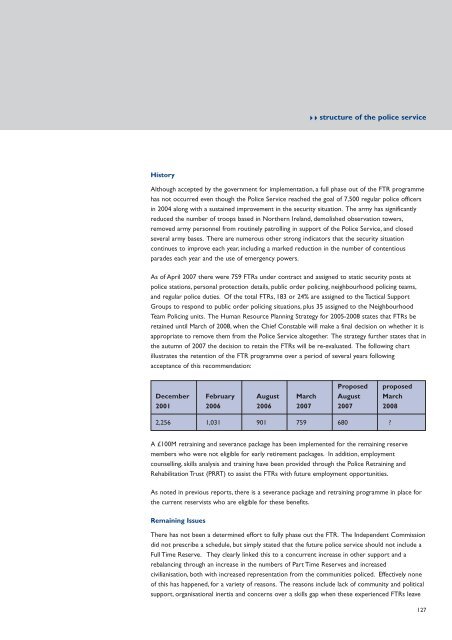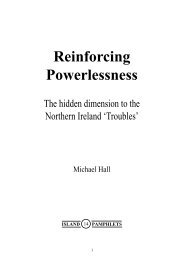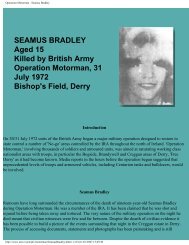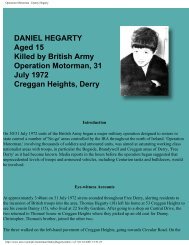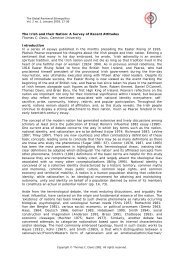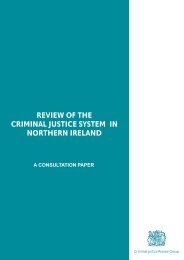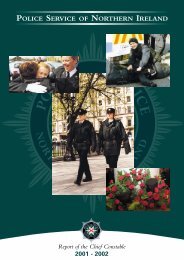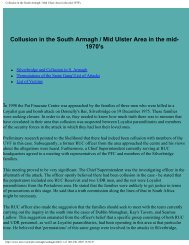11293 report 19 - CAIN - University of Ulster
11293 report 19 - CAIN - University of Ulster
11293 report 19 - CAIN - University of Ulster
You also want an ePaper? Increase the reach of your titles
YUMPU automatically turns print PDFs into web optimized ePapers that Google loves.
structure <strong>of</strong> the police serviceHistoryAlthough accepted by the government for implementation, a full phase out <strong>of</strong> the FTR programmehas not occurred even though the Police Service reached the goal <strong>of</strong> 7,500 regular police <strong>of</strong>ficersin 2004 along with a sustained improvement in the security situation. The army has significantlyreduced the number <strong>of</strong> troops based in Northern Ireland, demolished observation towers,removed army personnel from routinely patrolling in support <strong>of</strong> the Police Service, and closedseveral army bases. There are numerous other strong indicators that the security situationcontinues to improve each year, including a marked reduction in the number <strong>of</strong> contentiousparades each year and the use <strong>of</strong> emergency powers.As <strong>of</strong> April 2007 there were 759 FTRs under contract and assigned to static security posts atpolice stations, personal protection details, public order policing, neighbourhood policing teams,and regular police duties. Of the total FTRs, 183 or 24% are assigned to the Tactical SupportGroups to respond to public order policing situations, plus 35 assigned to the NeighbourhoodTeam Policing units. The Human Resource Planning Strategy for 2005-2008 states that FTRs beretained until March <strong>of</strong> 2008, when the Chief Constable will make a final decision on whether it isappropriate to remove them from the Police Service altogether. The strategy further states that inthe autumn <strong>of</strong> 2007 the decision to retain the FTRs will be re-evaluated. The following chartillustrates the retention <strong>of</strong> the FTR programme over a period <strong>of</strong> several years followingacceptance <strong>of</strong> this recommendation:Proposed proposedDecember February August March August March2001 2006 2006 2007 2007 20082,256 1,031 901 759 680 ?A £100M retraining and severance package has been implemented for the remaining reservemembers who were not eligible for early retirement packages. In addition, employmentcounselling, skills analysis and training have been provided through the Police Retraining andRehabilitation Trust (PRRT) to assist the FTRs with future employment opportunities.As noted in previous <strong>report</strong>s, there is a severance package and retraining programme in place forthe current reservists who are eligible for these benefits.Remaining IssuesThere has not been a determined effort to fully phase out the FTR. The Independent Commissiondid not prescribe a schedule, but simply stated that the future police service should not include aFull Time Reserve. They clearly linked this to a concurrent increase in other support and arebalancing through an increase in the numbers <strong>of</strong> Part Time Reserves and increasedcivilianisation, both with increased representation from the communities policed. Effectively none<strong>of</strong> this has happened, for a variety <strong>of</strong> reasons. The reasons include lack <strong>of</strong> community and politicalsupport, organisational inertia and concerns over a skills gap when these experienced FTRs leave127


